I feel I am in accord with the majority of people in Britain when I suggest this year, now drawing to a close with the world in turmoil and there being so much unhappiness and discontent throughout the land, is hardly one that will be remembered with affection.
I am fortunate in having an abiding interest in birds as it has provided me with a means of coping with almost constant bad news and the consequent worry and anxiety that it brings to my oftimes fragile spirit.
For as many days as possible I have sought solace in nature by leaving my home and taking to the local highways and byways in Oxfordshire. Such days bring a mental diversion so to speak where I forget about the human world and immerse myself in the natural world but like anything done repetitively this can pall without some variation.We all need a thrill, something different that adds spice to the mix of the everyday.
In my case this comes with the adventure of going to see rare birds, temporarily abandoning a supposedly normal existence, taking leave of what could be termed sensible behaviour and embarking on a helter skelter of emotional and physical turmoil to see birds that are rare and unusual, some very rare indeed, that arrive unexpectedly in Britain.
Personally this year has been a truly exceptional one for rare birds, easily the best so far for me and below is a list of some I have been fortunate to see during the last twelve months.
January
Pallas's Leaf Warbler Abingdon S.F Oxfordshire 13th January 2022
This Pallas's Leaf Warbler was found amongst a large congregation of wintering Chiffchaffs during a spell of hard weather at Abingdon Sewage Treatment Works in Oxfordshire. Not only was it highly unusual to find one in the depths of winter and inland but it was also exceptional for Oxfordshire as it was the first to be recorded in the county. On the day after its discovery, which was on the 5th of January, it became quite a social event as most of Oxfordshire's regular birders congregated to get it on their county list. Sometimes it could be very elusive but with patience would eventually reveal itself. I went back to see it four times whilst it remained throughout the cold spell. It left, as did many of the chiffchaffs, when the weather became milder. This was the ninth one I have seen in Britain.
Pacific Diver Eglyws Nunydd Reservoir Port Talbot Wales 15th January 2022


Two days after seeing the Pallas's Warbler I went to see a Pacific Diver in South Wales that was first discovered on the 11th December last year and spent the rest of that month and the following January on a reservoir adjacent to the giant steel works at Port Talbot. Despite dire warnings about security patrols due to the reservoir being strictly out of bounds to birders it was not that difficult to gain access and having taken a chance we were rewarded with point blank views of the diver as it fished in the northern corner of the reservoir.This was the third one I have seen in Britain, the others being the first ever to be seen in Britain which was near Knaresborough, North Yorkshire in January 2007 and then a second, ten years later at Druridge Bay Country Park, Northumberland in January 2017.
February
Baikal Teal RSPB Greylake nr Bridgewater Somerset 17th February 2022
Traditionally a quiet month for birding, this February proved an exception and found me in Somerset going to see a rather splendid male Baikal Teal associating with hundreds of Eurasian Teal on the RSPB's Greylake Reserve, near Bridgewater in Somerset. We were very lucky when we arrived as for once it was on view immediately. Others had not been so fortunate and the duck could remain invisible for long periods, even days, hidden away on the more distant flooded meadows of the reserve.Initially it was in dull brown eclipse plumage but during its stay moulted into the exotic finery that you see in the images above. This was my second in Britain, the first being another male at Fen Drayton RSPB, Cambridgeshire in April 2014.
Penduline Tit Weston super Mare Somerset 7th February 2022
On the way back from the Baikal Teal I diverted off the motorway to see a trio of these rare vagants.I had already tried twice to see them but failed so it turned out to be third time lucky. They are regularly seen in southeast England and East Anglia but anywhere else they remain as rare vagrants. To see three together and to see them so well was a treat and I felt it was just reward for the efforts I had made to catch up with them.Up until these three I had seen only six before in Britain.
American Robin Eastbourne East Sussex 10th February 2022
It was a return to my old stamping grounds in Sussex to see this American Robin, a rare thrush from North America that decided to set up temporary home on a housing estate in Eastbourne, no doubt attracted by the plentiful supply of berries in the gardens.When the berries ran out it disappeared and was never seen again.This was the third I have seen in Britain with the first being at Grimsby Lincolnshire in February 2004 which was killed by a Sparrowhawk and the other in Barnsley, South Yorkshire in January 2007 which I went to see the same day as I saw Britain's first Pacific Diver near Knaresborough in North Yorkshire.
March
White tailed Plover Frampton Marsh RSPB Lincolnshire 31st March 2022
This was a memorable trip to Frampton Marsh RSPB not only to see this extremely rare plover which very unusually had decided to spend the winter in Britain but also because I nearly froze in an unbelievably cold hide in order to get to see it so well. It spent time at various reserves in Yorkshire and Lincolnshire and I first saw it at Blacktoft Sands RSPB in East Yorkshire in August 2021 when the views were not that good but finally saw it well at Frampton Marsh. This was my second in Britain, the other being at Rainham Marshes RSPB in Essex in July 2010
April
Black browed Albatross Bempton Cliffs RSPB East Yorkshire 7th April 2022







Well what can one say. To see an albatross was a lifetime dream come true but I never thought it would be in Britain. Mark, my twitching pal and myself went to see this Black browed Albatross no less than six times at Bempton Cliffs RSPB.This was its second year cruising the cliffs and gannetry at Bempton and I cannot begin to describe the thrill of seeing this bird for the first time. A bird that should naturally be in the southern hemisphere but had somehow crossed into the northern hemisphere. Until the last two years it was a totally unrealistic hope to see one so well and so close as this one at Bempton as all previous sightings in Britain had either been from headlands of distant birds flying over the sea or requiring charter boats to go and see one perched on some forsaken rocky island far out to sea. Now it was relatively easy to watch this bird from the mainland at two of the visitor viewpoints at RSPB Bempton. Its celebrity status will forever remain undimmed. Let's hope it will come back in 2023. Obviously it was a first for me and most welcome.
May
Eleonora's Falcon Worth Marsh RSPB nr Sandwich Kent 28th May 2022
Long on birders 'most wanted list', only seven previous one day sightings of this falcon in Britain had been achieved prior to the arrival of this individual. The sighting of this bird, having been first identified as a Hobby, meant many including myself travelled in vain when it was re-identified, to try and catch a glimpse of it at Stodmarsh in Kent but it disappeared only to re-appear a few days later on the RSPB's reserve at nearby Worth Marsh. As it looked like staying the twitching flood gates opened and many birders travelled from all over Britain to watch it catching dragonflies over the reserve and at times giving sensational views. It remained on and around the reserve for over three weeks and anyone so inclined got to see this almost mythical species and so yet another blocker (twitcher speak for a long wished for bird) had fallen.
June
Great Reed Warbler Langston Lowfields RSPB nr Collingham Nottinghamshire 22nd June 2022
I have seen five Great Reed Warblers in Britain prior to this individual.One or two overshoot their southern and eastern European breeding grounds each year and commence singing and setting up territory wherever they find themselves in Britain.Their song is very loud and utterly distinctive even if you cannot see them! This individual at the RSPB's Langford Lowfields Reserve in Nottinghamshire had made a small reedbed its home and after quite some time of proving highly elusive allowed really close views.
Hoopoe Hinxworth Hertfordshire 25th June 2022
Maybe not so rare these days but a bird that in my opinion is always worth seeing, this Hoopoe graced a horse paddock in Hertfordshire for a few days and with patience one could get good views of it. This was the only one I have seen this year. Their outlandish profile, the zebra patterned black and white wings and pink body plumage always bring a touch of the exotic to the often mundane surroundings that they find themselves in when they turn up here. I see at least one most years and always find them enticing enough to travel and see if they are not too distant from my home.
July
Turkestan Shrike Wandale Farm Bempton East Yorkshire 9th July 2022
This Turkestan Shrike created enormous interest amongst us twitterati because it is only recently that Isabelline Shrike has been split into two species: Daurian Shrike and Turkestan Shrike, the latter being the rarer of the two. Many birders needed it for their British List so made the long trip to Bempton to where it remained faithful for over two months in the hedgerows around Wandale Farm. Couple this with the fact that the Black browed Albatross remained close by on the cliffs at Bempton and you could see why it was so popular. This was the second Turkestan Shrike I have seen in Britain, the first being on Shetland on the 28th September 2019.
August
Cape Gull Grafham Water Cambridgeshire 7th August 2022
An absolute mega, being a first for Britain. With the news coming out mid Saturday morning, this required an immediate drop everything and go response, resulting in a rapid drive cross country to Grafham. Fortunately the gull, looking very much like a Great Black backed Gull, remained sunning iself on the shores of Grafham Water all day and hundreds of birders were able to descend on the country park to add this gull to their lists. It remained for around a week, feeding on dead trout. Technically it should be called Kelp Gull but the sub species it belongs to is colloquially called Cape Gull as it is from southern Africa.
Greater Sand Plover Redcar North Yorkshire 30th August 2022
This was the second Greater Sand Plover I have seen in Britain, the first being at Easington in East Yorkshire on 15th July 2018 and which did not remain for more than two days. This individual, like the first was a male in breeding plumage but unlike the Easington bird was more obliging, remaining for over a week, thus allowing us to make a long day trip north to see it running around on a very popular beach at Redcar. It had first been seen near Aberdeen in northeast Scotland, a few days earlier and had worked its way as far south as Redcar but was not seen anywhere else subsequently.
September
Common Nighthawk Wantage Oxfordshire September 2022
It really does not get better than this. A completely unexpected bird to arrive from across the Atlantic and one which nobody in their wildest dreams could have predicted would be discovered sat on a fence in a market town in Oxfordshire. Needless to say this was the first for Oxfordshire and I think it is only the twenty seventh to ever be seen in Britain. For me it was incredibly fortunate as I live only thirty minutes away from Wantage and I spent the day there with other Oxonbird regulars collecting money for charity and organising the crowd of birders that came to see it. Everyone knew this bird would only be here for one day and so the heat was on for those coming from afar. I had travelled to see one at Galgorm Co Antrim in Northern Ireland on 10th October 2019 so it was nice to see this one on native soil so to speak.
October
Hornemann's Arctic Redpoll Toab Mainland Shetland 3rd October 2022
Some years are good and some years are not so good to see these delightful redpolls.This year was a good one and I saw at least four individuals on Shetland during my twelve day visit this autumn. Startlingly white compared to 'normal' redpolls, their plumage mirrors the cold areas they come from in Greenland and northeast Canada and therefore the unwelcoming climate of Shetland is of little concern to them.They have a habit of fluffing up their feathers so they do indeed live up to their affectionate name of 'snowballs.' I have seen nine of these lovely finches, all on Shetland apart from one in Suffolk.
Lanceolated Warbler Wester Quarff Mainland Shetland 4th October 2022

The one bird, along with White's Thrush, that I have yearned to see and for one reason or another always failed to do so. I knew that my only chance to see one was on a visit to Shetland and when a report came through of one of these mouse like birds at Wester Quarff it was a no brainer to where we pointed the car. After much confusion and some questionable behaviour with regard to the bird's welfare by the mass of birders present, order was restored by a well known local birder and everyone got to see it well if but briefly.
Myrtle Warbler Ellister Mainland Shetland 5th October 2022
Shetland during our time there was being battered by westerly gales and so it transpired that an American warbler blown across the Atlantic was found in a sycamore plantation close to the west coast of Shetland. It was a Myrtle Warbler now also called a Yellow rumped Warbler. At first it was hard to see and elusive in trees battered by the high winds and rain but eventually gave exceptional views when it descended to feed on the ground. This was my second ever in Britain, having seen one at High Shincliffe, Co Durham in February 2014. Almost unbelievably a second one was found at Bigton only a quarter of a mile away across the fields from Ellister by the same person who found the one at Ellister. Could the two warblers have been blown across the Atlantic together, sharing a death defying trip in a search for a safe landfall? It is nice to think so.




I went to see the second bird too (see images above), on the 7th October, the day it was found and my count of Yellow rumped Warblers seen in Britain advanced to three. Who would have thought it!
Least Bittern Scousburgh Beach Loch of Spiggie Mainland Shetland 7th October 2022
While I was watching the second Yellow rumped Warbler at Bigton, news came through that a Least Bittern, a tiny North American heron, had been found exhausted in the small car park at Scousburgh Beach near Loch of Spiggie. Pandemonium ensued as this was another first for Britain and hundreds of birders would be descending on the car park anxious to see it. To cut a long and rather unfortunate story short we saw the bird after it had sought sanctuary in the adjacent dunes and before it was picked up with the intention of it being taken somewhere safe to be cared for. It was however shown to the assembled birders first and only then taken away in a box to be looked after. It died that night. I still find it hard to reconcile all that went on that late afternoon.The usual excitement and thrill of seeing a new bird failed to materialise as the way the situation was handled left me with some concerns. I will leave it at that.
White's Thrush Lerwick Mainland Shetland 10th October 2022
The ultimate! Personally this was my most desired bird to see in Britain. Like the Lancy (Lanceolated Warbler) I knew my only real chance to see this thrush in Britain was to be on Shetland when one was discovered. Two years ago I came within a whisker of seeing one but dipped. Here at last was a really good chance to finally get this wonderful bird on my British List. Only one or two are found each year, if that and I was not about to let this one slip away. In the end I got to see it really well, far better than I could have ever hoped but only following some nerve wracking moments and enduring appalling weather which perversely made the experience even more uplifting.Without any exaggeration this has to be my bird of the year and will probably remain so for the other years to come. Quite superb and I still get the same buzz on looking at its photograph as I did when I first set eyes on it.
Blackburnian Warbler Bryher Isles of Scilly 17th October 2022
Only the fourth ever to be found in Britain and after a wait of 33 years, this was a must see as it would be a first for me and unlikely that I will see another in my lifetime. My twitching pals went to see it on Friday, the day after we got back from Shetland but due to work commitments I had to endure an agonising wait until the following Monday.The logistics of getting to Bryher were a nightmare but somehow it all worked out on the day as a combination of luck and forethought ensured everything fell into place and via helicopter, electric buggy and speed boat, myself and Oxonbirding pal Justin got to see it. I could not help but compare the almost tropical warmth and sunshine of Bryher that greeted us on the day to the exact opposite I had experienced three days previously on Shetland. I still prefer Shetland though!
Alpine Accentor Aldeburgh Suffolk 28th October 2022
Another long anticipated and much desired bird gave itself up with the arrival of this individual at Aldeburgh. The first for twenty years to be seen in Britain. Unable to go on the afternoon it was found we were there at first light the next morning and succssfully twitched it, remaining there all day as it became progressively more confiding, doubtless due to the large crowd of birders at first light becoming considerably less as the day wore on. It was gone the next morning but another different individual was found two days later at Blakeney Point on the north Norfolk coast, so those who missed this one were able to go and see the second bird.
November
Sabine's Gull Lympne Safari Park Lympne Kent 5th November 2022
This ridiculously confiding juvenile tempted me to make a long car journey down to Kent on a very rainy Saturday. I have seen quite a few in Britain but this was easily the closest that one has ever allowed me. I spent a couple of hours watching it marching up and down, 'hoiking' worms from the waterlogged grass and about as far from its normal winter home far out to sea as it could be. This was the tenth individual I have seen in Britain, all bar two being juveniles.
Pied Wheatear Whitley Bay Northumberland 12th November 2022
Another confiding bird that was too much to resist as it allowed both myself and my pal Mark to get some fabulous close up photos.You could hardly fail as it came within four feet of us at times! This individual was a first year male and the third of its kind I have seen in Britain although we were lucky to see it as it had gone the next day. The other two I have seen were an adult male in July 1990 at Newhaven in East Sussex and a female at Oldbury on Severn, Gloucestershire in October 2011.
The list of species I have now seen in Britain is 528.
I can only wonder what the next one will be.
If you have a mind to look, I have written a blog on each of the birds I have listed above. Just take a scroll back and you will find them.

-DeNoiseAI-standard.jpg)









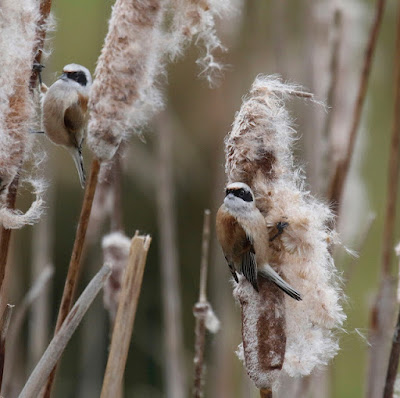


.JPG)




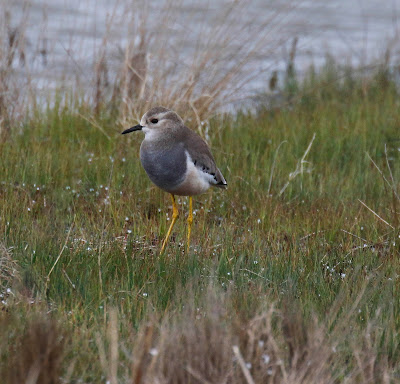







.jpeg)












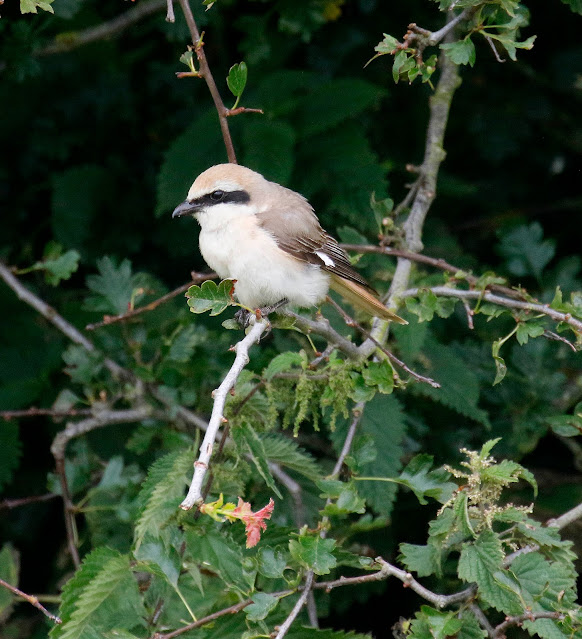
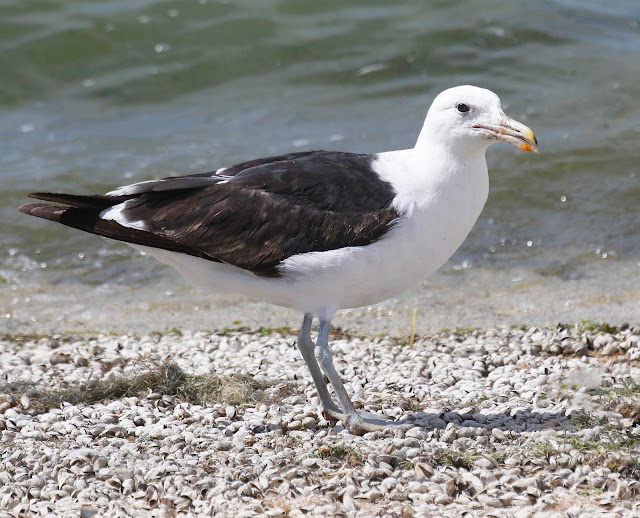










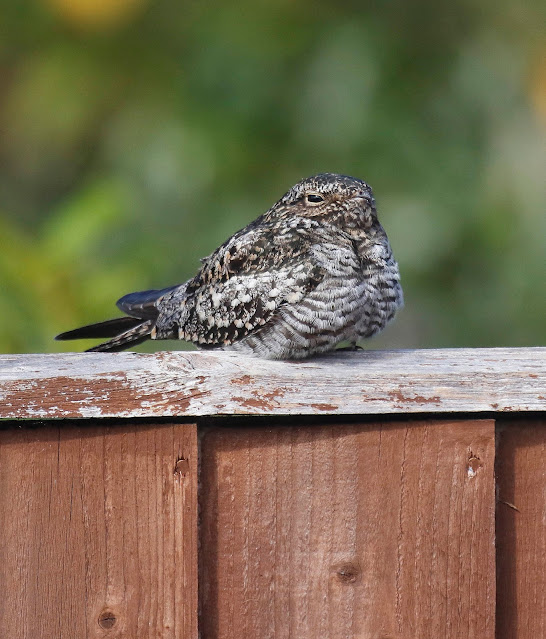






.JPG)

.jpg)








-DeNoiseAI-low-light.JPG)
-DeNoiseAI-standard.jpg)

.jpg)














Thank you for your labour of love recording your travels and adventures. It's a wonderful and uplifting read, which is something much needed at the moment. Though I'm always aware that often these birds are lost and sometimes unlikely to ever get back to their usual habitat. I hope they manage to survive in new surroundings but suspect they often don't.
ReplyDeleteThank you for your kind comments Colin. I think some of those from the east do manage to re-orientate themselves. My best wishes for your wellbeing in these difficult times.
DeleteEwan